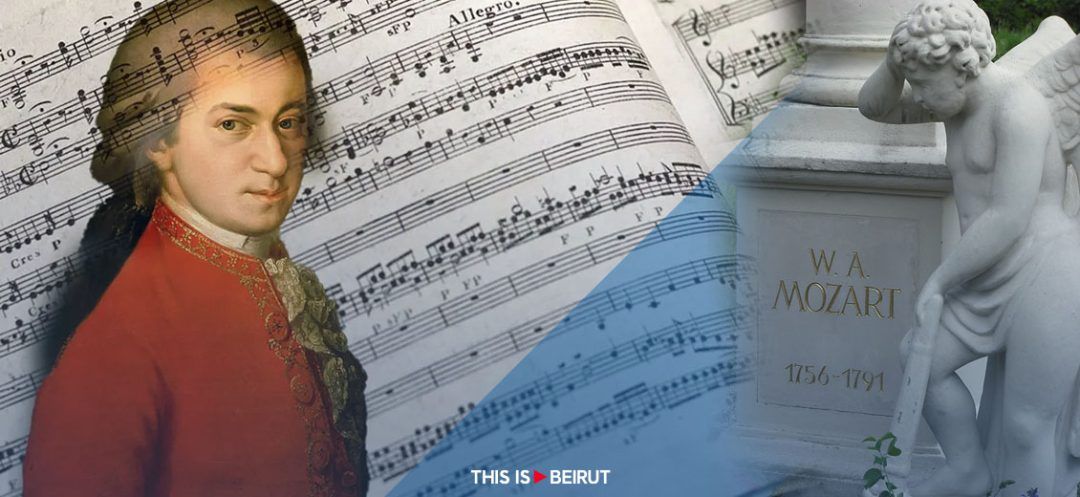
The ongoing controversy surrounding the burial of Mozart, fueled by the film Amadeus, is debunked by reliable historical sources, refuting the idea of a mass grave. On the occasion of the commemoration of Mozart’s birthday, This is Beirut highlights the circumstances surrounding his death and funeral.
The persistent myth that Wolfgang Amadeus Mozart (1756-1791) was relegated to a mass grave remains as vivid as the musical masterpieces left by the Austrian composer. Is it really appropriate to dwell at length on deconstructing this absurdity, or wouldn’t the title alone be explicit enough to enlighten misguided minds? It seems that even Mozart, from where he rests, might allow himself a sigh of exasperation in the face of this unfounded rumor. After all, nothing like a film imbued with a romantic character, but whose historical accuracy is altered, to sow confusion and allow such legends to thrive. For the uninitiated readers, it should be specified that the mention concerns the film Amadeus directed by Miloš Forman. On the occasion of the commemoration of Mozart’s birthday, January 27, it is appropriate to lift the veil (once again) on the true story of the composer’s burial, stripped of the cinematic artifices that have tarnished the reputation of this great artist.
Reliable sources
In the musical field, as in any other discipline, it goes without saying that the use of reliable sources remains crucial, if not imperative. In this respect, Mozart’s situation in 1791 has been meticulously examined by one of the most eminent specialists of the composer, H. C. Robbins Landon (1926-2009). This serious research has led to the publication of a work, entitled 1791. Mozart’s Last Year, published by Schirmer Books in 1988. It is strongly recommended to consult this source, as well as other references such as Haydn et Mozart (Fayard, 2001) and Antonio Salieri (Bleu Nuit, 2014) by Marc Vignal, dean of French musicologists, to better understand the historical and musical context of this period. In fact, in 1791, Mozart experienced a period of financial prosperity after the dark times of 1789 and 1790. During his last months, marked by prolific creativity, he composed two major operas, The Magic Flute (Die Zauberflöte, K.620) and La Clemenza di Tito, K.621, two concertos, Piano Concerto No. 27 in B-flat major, K.595 and the Clarinet Concerto in A major, K.622, as well as the String Quintet No. 6 in E-flat major K.614.
Financial Prosperity
Mozart also contributed to the enrichment of the Masonic repertoire with four significant compositions (K.619, K.620, K.623, and K.623a). In July 1791, Mozart received the commission for a requiem (K.626) whose patron’s identity was undisclosed at the time, but it is now known to have been Count Franz von Walsegg (1763-1827). The Austrian composer accepted this new commission, marking his return to sacred music, which he had largely set aside following his dispute with Prince-Archbishop Hieronymus von Colloredo and his resignation from his position as concertmaster (Konzertmeister) at the court of the Archbishopric of Salzburg. "I am no longer the misfortune of being in the service of the court of Salzburg, this day was for me a day of happiness," Mozart wrote in a letter to his father on May 9, 1781. The composition of the Requiem in D minor was interrupted by other pressing commitments, notably the composition of La Clemenza di Tito for the coronation of Emperor Leopold II of Bohemia. Thus, it is evident that Mozart’s financial situation at this time was more than favorable, and he did not die in poverty.
Premature death
The theories about Antonio Salieri’s (1750-1825) involvement in Mozart’s death, as depicted in Miloš Forman’s film, Amadeus, are widely considered romanticized elements rather than established historical facts. In reality, the exact cause of Mozart’s death remains unknown, but among the 160 hypotheses put forward on the possible circumstances of his death, the most plausible suggests an overdose of homemade medications of uncertain quality. This sad episode would have occurred on already weakened ground, notably due to acute rheumatic fever. The cumulative impact of his artistic commitments, his precarious health and his dubious medications could thus have contributed to his premature death at 35 years old on December 5, 1791. While some theories suggest that Mozart, anticipating his imminent death, composed his Requiem in anticipation of his own demise, it is essential to emphasize that the composer was completely unaware that he was about to die. The famous letter attributed to Mozart, declaring "This is my swan song, I do not want to leave it unfinished," is a pure and simple fake. It is anonymous, probably dated from the 1820s and written in very poor Italian, full of mistakes, while Mozart was fluent in Italian.
Individual "common" grave
On the afternoon of December 6, 1791, a funeral service was held in the Chapel of the Crucifix. Contrary to repeated claims, this ceremony did not take place in the Chapel of the Cross inside St. Stephen’s Cathedral in Vienna. The burial likely took place the next day in an "individual common grave" in the parish vault, in accordance with a "third-class" burial, as was common for most of the Viennese population, and according to the precise sanitary rules dictated by Emperor Leopold II. Walther Brauneis, a specialist in the Austrian composer, specifies in one of his publications that "the word 'common' must not be equated with 'joint' or 'communal', but rather is intended to denote equality without respect to social status. Mozart’s grave was neither a pauper’s grave nor a mass grave." Furthermore, it was a simple excavation where there was no right of ownership, thus allowing its emptying and new use after a period of ten years.
Well-established traditions
This practice aimed to discourage visits to the deceased and to prevent the risk of bringing miasmas back into the city. It is probably for this reason that the composer’s remains have never been found. Almost no one attends the burial, in accordance with tradition and the requirements of the imperial decree, but also due to fear of a possible epidemic. Following this analysis, it is evident, as musicologist Gilles Cantagrel (in a discussion with the author of these lines) attests, that Mozart’s body "was not thrown into the ground as if to get rid of it, like a mangy dog, almost in secret." During the 19th century, funeral practices underwent a complete transformation, leaving our understanding of Mozart’s funeral as obscure as a moonless night. However, from the perspective of his contemporaries, the ceremony and burial were simply in line with the well-established traditions for the vast majority of the population.
A little redundancy never killed anyone: Mozart was not buried in a mass grave!
Read more




Comments